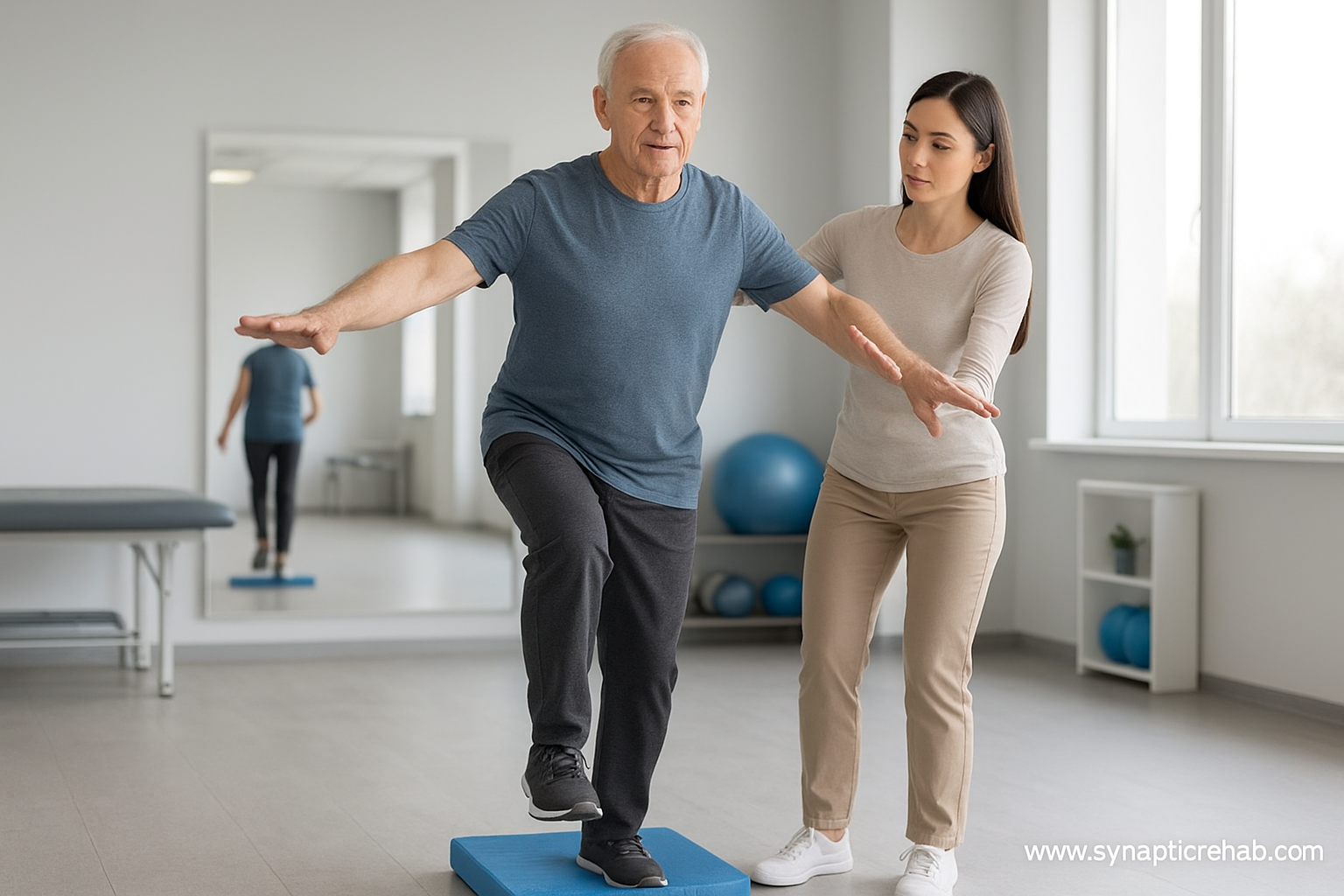Why Parkinson’s Patients Shouldn’t Skip Balance Training
If you live with Parkinson’s disease, you’ve likely noticed that balance doesn’t feel as steady as it once did. Small shifts — turning too quickly, stepping onto uneven ground, or multitasking while walking — can suddenly feel challenging.
But here’s the good news: balance can be trained, strengthened, and improved at any stage of Parkinson’s. Skipping balance work is one of the biggest mistakes patients make — and it can make a world of difference in confidence, safety, and independence.
Why Balance Problems Happen in Parkinson’s
Parkinson’s affects how your brain controls movement. Over time, it can cause:
- Slower reflexes, making it harder to react to changes in position
- Muscle stiffness and reduced flexibility, which affect posture
- Difficulty shifting weight, especially when changing direction
- Changes in walking pattern, leading to shuffling or shorter steps
These challenges increase the risk of falls — but targeted therapy can help retrain your body’s coordination and stability.
Learn more about Parkinson’s Disease Physical Therapy in Bridgewater, NJ and how we help patients regain control of movement.
The Benefits of Balance Training for Parkinson’s
1. Reduced Fall Risk
Structured balance exercises improve reaction time and help the body recover from minor slips before a fall occurs.
2. Improved Walking Confidence
With better balance, walking becomes smoother and less stressful — especially in crowded or uneven environments.
3. Better Posture and Core Strength
Balance work strengthens the hips, legs, and core — all essential for upright posture and endurance.
4. Enhanced Brain-Body Coordination
Balance training challenges your brain and muscles to work together, promoting neuroplasticity — the brain’s ability to create new movement pathways.
External link: Learn more about neuroplasticity and Parkinson’s exercise from the Parkinson’s Foundation.
What Balance Therapy Looks Like at Synaptic Rehab
At our Parkinson’s Wellness Center in Bridgewater, balance training is built into every patient’s care plan.
We use proven, evidence-based approaches such as:
- Gait training: improving stride, foot placement, and posture
- Dual-task balance exercises: walking while counting or turning
- Core stabilization: using targeted movements to strengthen the trunk
- Sensory training: helping the body adapt to different surfaces and movements
Our therapists tailor every session to your stage, comfort, and goals — because no two patients experience Parkinson’s the same way.
Balance Training You Can Do at Home
Here are a few gentle ways to work on stability between therapy visits:
- Stand near a counter and practice shifting weight from one foot to the other.
- Walk heel-to-toe in a straight line to improve gait control.
- Try standing on one foot for 10 seconds (always with support nearby).
If you’re unsure where to start, your physical therapist can recommend a safe routine tailored to you.
The Bottom Line
Balance isn’t something you lose forever — it’s something you can rebuild.
Consistent training, whether in therapy or at home, can restore movement confidence and make daily life safer and more enjoyable.
📍 Visit us at 1200 Route 22 East, Suite 4, Bridgewater, NJ 08807
📞 Call: 908-801-6425
💻 Learn more about our Parkinson’s Disease Treatment Services.
Steven Cheung, DPT
Steven is the founder and lead physical therapist at SYNAPTIC Rehabilitation. He earned a BS in Exercise Science Applied Kinesiology from Rutgers University in New Brunswick, NJ and his Doctorate degree from American International College in Springfield, MA. Steven specializes in movement disorders such as Parkinson’s disease and many other neurological disorders. Outside of practicing physical therapy Steven enjoys time with his wife, running, and staying active.

